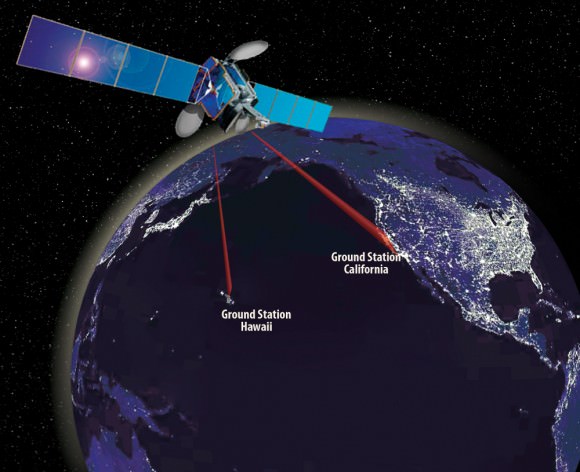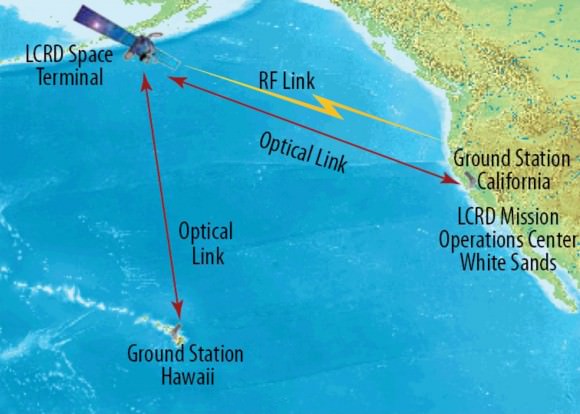
Conceptual image of The Laser Communications Relay Demonstration. Credit: NASA
Improving data communication rates would allow scientists to collect additional data from future missions to Mars, Titan or other destinations in our solar system.
How does NASA plan to overcome the current limitations in communication with spacecraft outside Earth orbit?
One of three recently announced technology demonstrations, The Laser Communications Relay Demonstration, will help demonstrate and validate laser-based communications. One of many goals for the LCRD is to provide spacecraft in Earth orbit ( and beyond ) a faster and reliable method of communication than standard radio communications currently in use.
A laser-based communication will allow NASA and other government agencies to perform missions that require higher data rates. In the cases where less data is required, the laser-based systems would consume less power, mass and precious volume inside a spacecraft. Given roughly equal mass, power, and volume, the laser-based communications system offers much higher data rates than a radio-based communications system.
NASA’s goals for the LCRD are to:
Enable reliable, capable, and cost effective optical communications technologies for near earth applications and provide the next steps required toward optical communications for deep space missions
Demonstrate high data rate optical communications technology necessary for:
High-rate communications 10-100 times more capable than current radio systems will also allow for greatly improved connectivity and enable new generations of remote missions that are far more capable than today’s missions. NASA’s LCRD will also provide the satellite communication industry with technology not available today. Laser-based space communications will enable missions to use high-definition video and and pave the way for a possible “virtual presence” on a remote planet or other bodies in the solar system.
While the laser-based communications technology featured in the LCRD will allow more data to be sent from spacecraft to scientists on Earth, the communication delays (a few seconds for the Moon, and over twenty minutes for Mars) will still require careful mission planning.

Diagram of LCRD mission. Image Credit: NASA
If you’d like to learn more about NASA’s LCRD, you can read more at: http://www.nasa.gov/topics/technology/features/laser-comm.html
Source: Universe Today
No hay comentarios:
Publicar un comentario